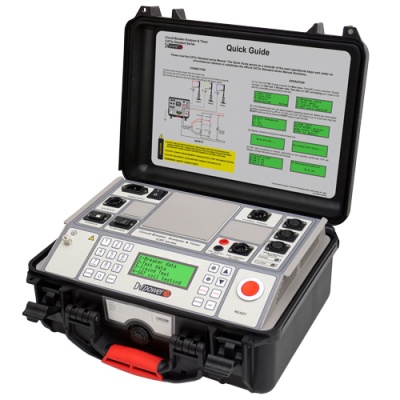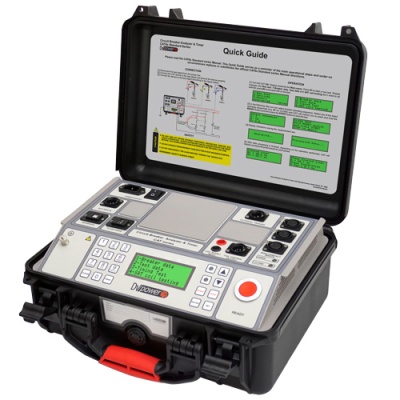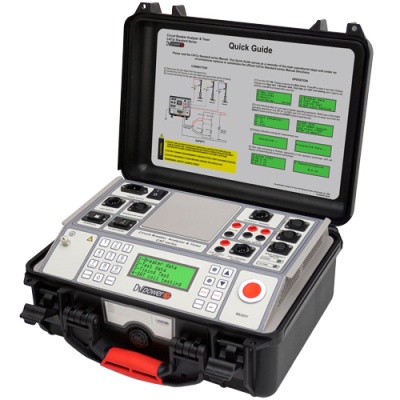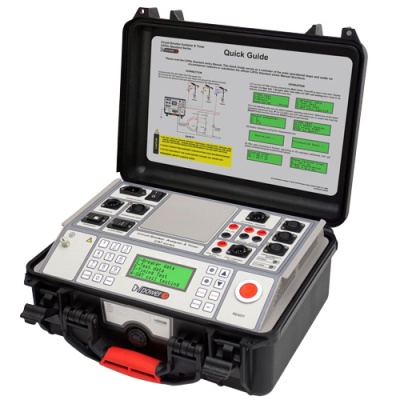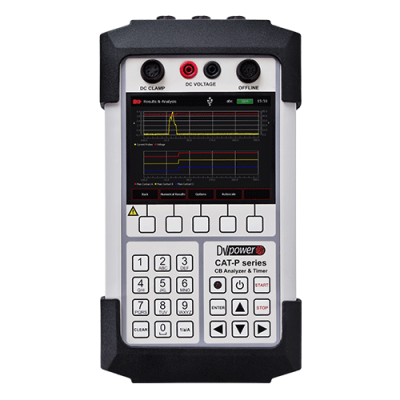Importance of Recording the Actuating Coil Current Waveform
This Note describes one alternative method for a circuit breaker operating condition estimate. By providing and analyzing the actuating coil current wave form during opening or closing operation, one can get an insight in the CB operational status. [1] Standard IEC-62271-100 suggests the actuating coil current waveform should be recorded during a test and attached to the test report.
The actuating coil consists of a conductor wrapped around a movable iron plunger forming an electromagnetic actuator. The actuating coil becomes energized following the initiation of a control command.
The coil plunger motion can be characterized by the current flowing through the coil. The correlation between the breaker operational condition, and the coil current waveform suggests the use of the actuating coil as a ready-made non-invasive condition monitoring sensor. The resulting coil current waveform provides a chronological record of the operating sequence and timings associated with the various breaker components during an operation.
The current flowing through the breaker actuating coil generates an electromagnetic field exerting a force upon the plunger, moving it towards the breaker latch mechanism. At the same time, the motion of the iron plunger induces an EMF (Electromotive Force) in the coil [1]. The Figure 1. illustrates effect of the moving iron plunger on the opening (trip) coil current. It presents a part of the graph that was recorded using the CAT device and the DV-Win software.
When the opening (trip) command is initiated the coil is energized (Figure 1, point 1) and the current rises causing a magnetic field to apply a force on the iron plunger. When the force on the plunger exceeds the retaining force, the plunger begins to move (point 2). The motion of the iron plunger induces an EMF in the coil, effectively reducing the current. As the plunger continues to move through the coil, the current flowing through the opening coil changes (Figure 1, segment between the points 2 to 3), until the plunger strikes the latch mechanism. At that time a sudden reduction in the velocity of the plunger occurs resulting in a “cusp” in the current waveform (point 3). The combined mass of the plunger and the latch continue to move at a reduced velocity causing a further reduction in the coil current (segment between the points 3 to 4) until it hits a buffer bringing it to a rest (point 4). With the plunger at rest the current increases to the saturation level (DC current that is proportional to the coil resistance, point 5). Meanwhile, the latch unlocks operating mechanism, releasing the stored energy to open the main breaker contacts. Typically, after a short delay the auxiliary contacts open, disconnecting the opening coil from the substation DC battery supply, or some other supply (point 6). As the coil is de-energized, the current drops quickly to zero in accordance to the coil inductance (point 7) [1].

Keeping in mind the previous analysis and comparing the recorded coil current waveform with its reference, it is possible to obtain information about coil condition (i.e. increased friction of the plunger, burned insulation etc.), unlocking latch condition (increased friction), and operating mechanism condition (reduced operating mechanism speed that can be seen based on the opening time of auxiliary relay contacts).
An actuating coil current waveform can be recorded with Circuit Breaker Analyzer & Timer (CAT instruments) using DV-Win software. The CAT device records the graphs of both Opening (Trip) and Closing coil currents. A coil current waveform can be printed in a graphical form. The CAT contains coil control circuit which allows the user to operate the circuit breaker Opening and Closing coil from this device. To record a coil current waveform it is needed to connect the coil control cables to the control circuit of a circuit breaker as shown in the Figure 2. In addition, initiation of the opening and closing steps from the CAT device is enabled, as well.
To record and display a coil current waveform on a PC it is necessary to use DV-Win software providing detailed analysis of the coil current waveform.
Coil current can also be recorded by using current probes with a CAT device (Figure 3) when it is not allowed to connect at terminals of the coil circuit (e.g. online "First trip" test).


Figure 3. Connection the CAT-P with the current clamps to the control circuit and CT secondary circuit of a circuit breaker

